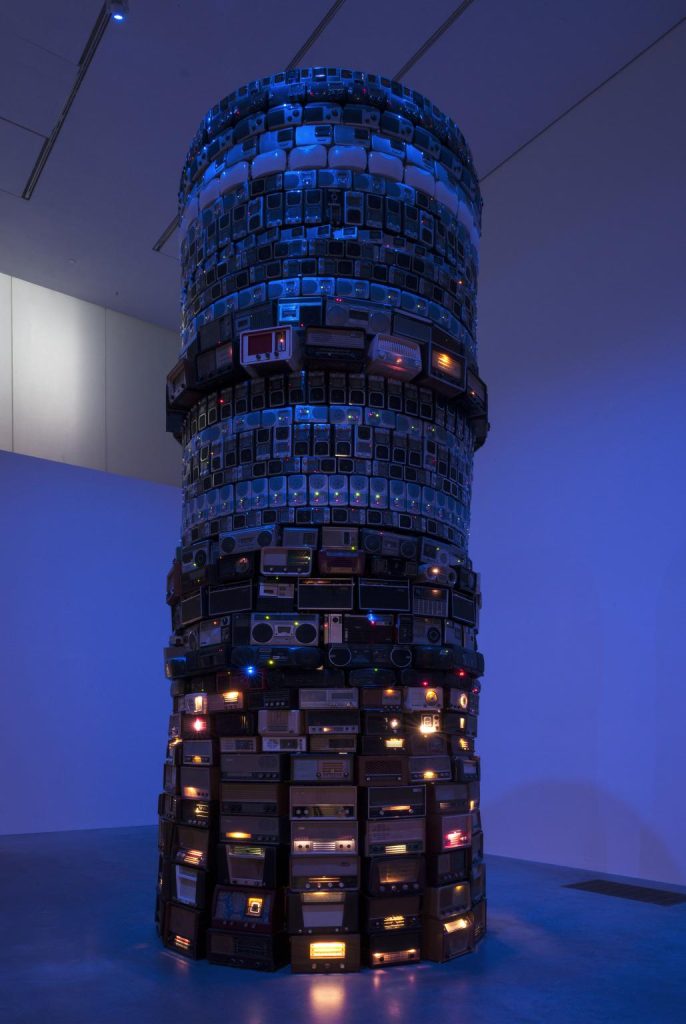‘Babel’, Cildo Meireles, 2001

This week, as a class we visited the Tate Modern.
Without looking up a description, or looking at a picture of the description that I took of the piece, I want to try and describe the piece for myself from memory and feeling.
‘Babel’ is a sculptural installation approximately 20 feet high. It is a tower constructed of radios dating from the early 20th century all the way through to now. Each radio was on, and was tuned to any given station, all at around the same volume where each is audible, but also impossible to comprehend individually due to the sheer amount of radios. Overall, the piece creates a collage of incomprehensible voices and music.
Personally, I feel that this piece can be interpreted in a variety of ways. For some, it may simply be an exploration into the idea of ‘media overload’ and how this issue can be very overwhelming, a sensory overload; perhaps a nod to the media and news in general. Additionally, the idea of sensory overload also ties into how the sculpture occupies the space its in. The sheer size of the sculpture is objectively already intimidating enough, but the shape of the sculpture also makes it feel uncanny and cold; it is round, and although there are edges on the radios themselves, the actual sculpture doesn’t possess any edges, making it feel unapproachable and daunting. Furthermore, the dark blue lighting gives the room a very cold, unwelcoming feel. This is an interesting contrast to the warm yellow lights of the older radios, although as you scale the piece lights begin to disappear altogether as technology improves and modern radios no longer need this fashion of lighting on them. This is also possibly an idea that Miereles was trying to convey, that the development of technology over time is dark and cold.
I spent around 20 minutes with the artwork, making my way around the structure at a relatively slow pace and taking pauses to try and hone in on individual radios and just how the piece made me feel generally. I was very interested in the directionality of the individual radios, how each radio’s sound waves shot in a different direction sonically. I can’t really explain this point beyond this, other than this idea allowed me to hone in on individual radios for brief periods of time. I am also pleased that I picked up on one of the main ideas of this piece which was incomprehension, it was only after my visit that I read Meireles referring to the piece as a ‘tower of incomprehension’.
I’m struggling to think of a criticism that feels valid, and/or noteworthy, but I will continue to ponder on this and make any notes if anything comes to mind.
One criticism I have, however, is that I believe the piece and its ideas could be elevated further without the use of lighting. I understand that in a gallery, people need to move around but for me this takes away from the theme of incomprehension. Without lighting there are no external factors than can influence someones interpretation of the piece other than the space it occupies, which is arguably an important segment of this piece anyway. The lighting adds this ‘cold’ feel that I have already discussed, but other than the contrast between itself and the warm lights of the radios, I don’t feel as though the lighting is particularly relevant and that the art should be consumed in the dark.